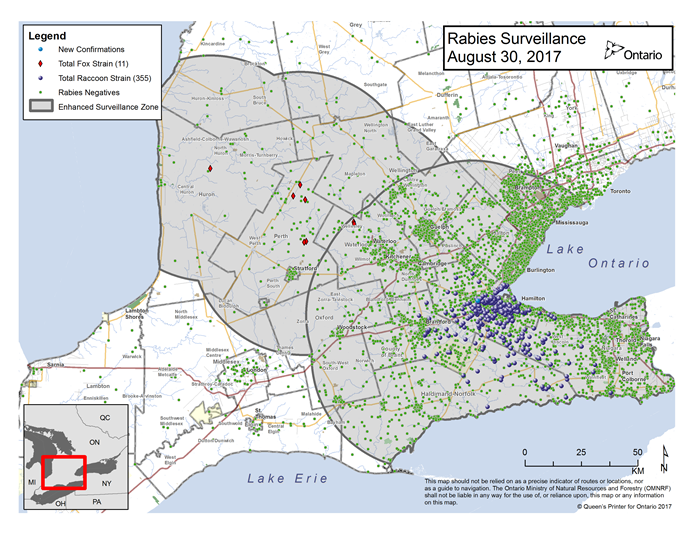Humans have an incredible ability to change their surroundings and their environment (albeit not always in a good way). We have taken lands, forests, wetlands and converted them into jungles of concrete with new subdivisions, houses, manufacturing plants, etc. As we displace animals by taking their habitats we come more and more in contact with wildlife; now we can probably all agree that there is nothing cuter than seeing a doe with her fawn walking across our backyard, mom raccoon walking around with her pups. We tend to run for a camera so we can capture the moment. Deer, raccoons, opossums, coyotes, etc. now live closer to urban areas than ever before. However, there are two sides to this story, the cute side and the not-so-cute one. Wildlife can carry with them pathogens that can cross over to our domestic animals. There is also climate change, I don’t want to enter into a debate about it, so for the sake of this argument let’s all agree that it is real and that it is happening. Between climate change and wildlife encounters, we have started to see in Southwestern Ontario an increase in the prevalence of certain diseases.
As veterinarians it is our duty to inform owners of these changes and if necessary make adjustment to our vaccination/deworming protocols.
 Rabies: in Ontario it is mandatory to have dogs, cats, horses and livestock vaccinated against rabies, but is still important to remind owners of the importance of this vaccine besides the legal aspect. In recent years there has been an increase in rabid raccoons and skunks. According to the Ministry of Natural Resources and Forestry in 2014 there were no reported cases of rabies in raccoons or skunks, and since December 2015 to date there have been 199 raccoon cases, 92 skunks, 1 fox, 5 bovines and 2 cats. There is always a possibility that our pets will have an interaction with any of these species, so rabies vaccines are a serious business!
Rabies: in Ontario it is mandatory to have dogs, cats, horses and livestock vaccinated against rabies, but is still important to remind owners of the importance of this vaccine besides the legal aspect. In recent years there has been an increase in rabid raccoons and skunks. According to the Ministry of Natural Resources and Forestry in 2014 there were no reported cases of rabies in raccoons or skunks, and since December 2015 to date there have been 199 raccoon cases, 92 skunks, 1 fox, 5 bovines and 2 cats. There is always a possibility that our pets will have an interaction with any of these species, so rabies vaccines are a serious business!
Leptospirosis: It’s a bacterial disease caused by Leptospira spp. It can be transmitted to your dog from wildlife and rodents. And it can be also transmitted to humans! This bacteria can cause acute renal failure, affect the liver and in some cases other organs. Before the recommendation was to vaccinate mostly dogs greater than two years old, hunting dogs and dogs that had an increased exposure to lakes and ponds were at higher risk; however, as we are closer and closer to wildlife, we know that any dog can become infected. Transmission of this occurs from direct contact with contaminated water or soil. The bacteria is eliminated in the urine and it can enter through a cut in the skin or the mucosa (eye, nose, mouth). Dogs can become infected by drinking water from a pond or even sniffing where an infected animal has recently urinated. So leptospirosis vaccination should be discussed with owners.
Lyme disease: a disease caused by Borrelia burgdorferi, a spirochete (type of bacteria) that is transmitted by the Deer tick. In dogs it can cause fever, lameness, joint swelling and even neurological disease. Horses can also be affected by this disease. With climate change there has been an increase in the number of ticks and the length of time our pets are exposed to them, as long as the weather is above 7 degrees Celsius ticks can be active. So tick prevention needs to be selected on the basis of the particular tick that carries this bacteria and be used during the months when ticks are active. You can read my classmate’s post “Tick talk” by Hannah Chenail for more information - she has an excellent post.
Echinococcus multilocularis a small tapeworm that primarily occurs in wild canids such as coyotes and foxes. Although this parasite is not a big problem for them, it can be problematic to dogs and humans. If the eggs of this parasite are consumed, the larvae can migrate to the liver which has the potential to have devastating effects. This parasite is an emerging risk, one more thing to add to those important conversations with owners!
As our world changes, so does the prevalence and distribution of many pathogens. It is important to keep an open mind and realize that as veterinarians we need to evolve and change some of our practices and recommendations too. It is our responsibility to educate owners and to protect their pets.
(Illustration: Ontario Ministry of Natural Resources and Forestry Wildlife Rabies Surveillance and Control Zones - August 30, 2017 http://www.omafra.gov.on.ca/english/food/inspection/ahw/rabieszone.htm)
